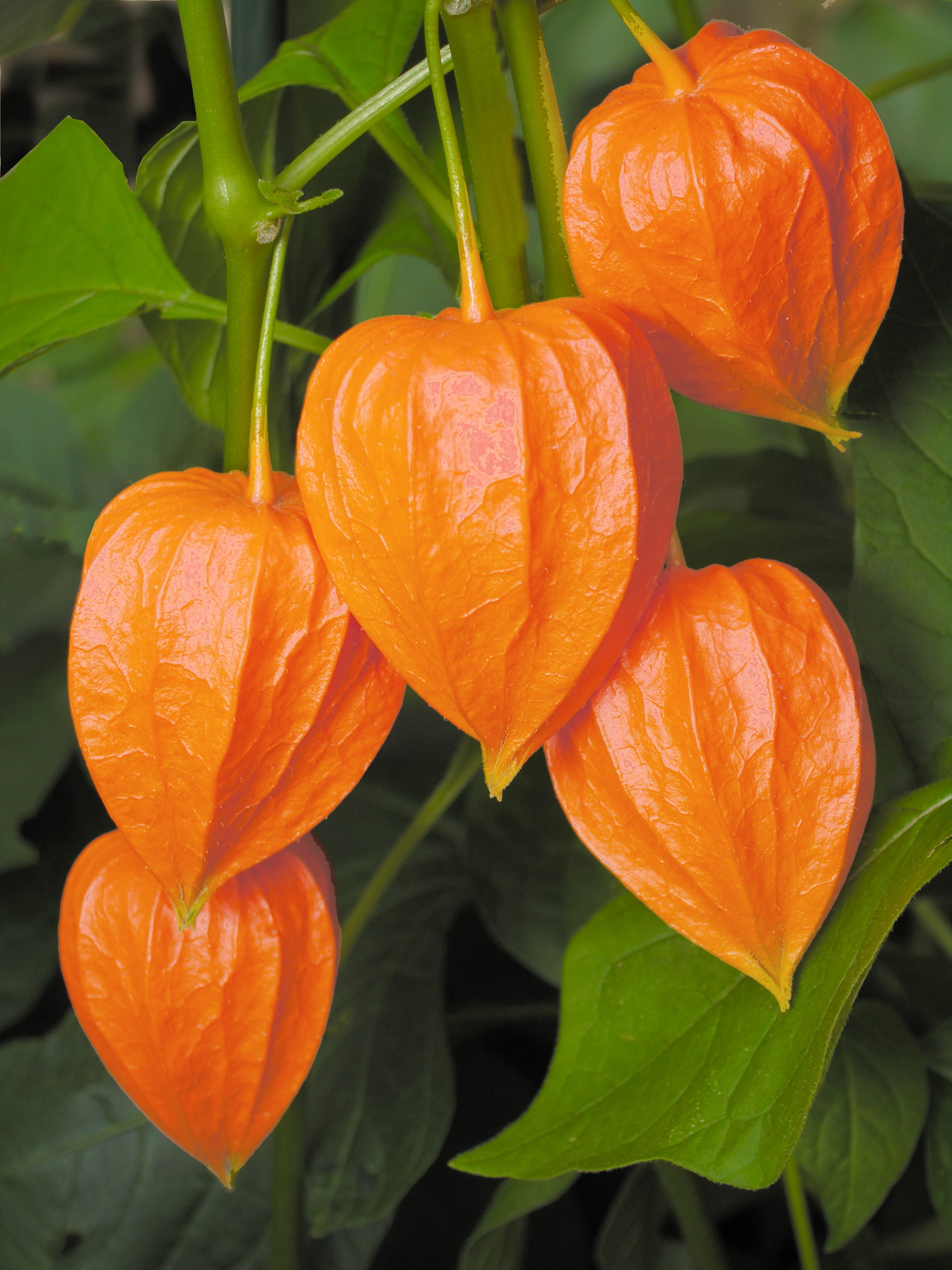Caring for Chinese Lantern plants (Physalis alkekengi)

Those attractive Chinese Lantern Plants found in grocery stores and garden centers about this time in fall are nightshades, part of the Solanaceae family of over 2500 species that includes important garden vegetables, such as tomatoes, peppers, eggplants, potatoes, and tomatillos; major agricultural crops such as tobacco; as well as poisonous plants, weeds, medicinal plants, and popular ornamentals. The attraction of Chinese Lantern plants is not the spring flowers, but the large, orange-red, papery husks that surround the plant’s inedible fruit, an attractive compliment to fall landscapes and gardens, and as living-plant or dried-flower-arrangement decoration for Halloween or Thanksgiving.
Mature Chinese Lantern fruits look quite a bit like an orangish-red version of tomatillos, but beware, despite their close relationship to tomatillos and groundcherries, like many members of the nightshade family, some or all of the Chinese Lantern Plant is poisonous. The berry inside its orange-red husks is decidedly NOT edible.
Many members of the nightshade family are famous for their toxic and/or medicinal alkeloids. Legend has it that the Scottish King Macbeth poisoned an army of invading Danes using liquor laced with nightshade. Opinions and reference works often differ as to degree of toxicity and which plant parts are toxic for many members of the nightshade family. GardenZeus recommends treating all portions of Chinese Lantern Plants including the fruits as poisonous, and this also applies to all portions of all other members of the Solanaceae family, including all parts (such as sprouts, leaves, or stems) of garden vegetables in the nightshade family with known edible parts such as tomatoes and potatoes.
When planted in the ground, Chinese Lantern plants can be invasive, spreading where you may not want them through underground stems, particularly in moist and fertile soils.
Care for your Chinese Lantern plant as you would a tomato or a tomatillo. Consider growing it in a container in full sun, to be moved into afternoon shade during heat waves, and maintain consistent soil moisture with a partial or slight dry-down of soil between waterings to ensure that soil is not consistently wet.
After you have enjoyed your Chinese Lantern plant in its container, trim the stems, strip the leaves, and dry the stems and husks for use in an indoor flower arrangement.
This is an updated version of an article originally published on October 28, 2016.
For additional instructions on growing tomatoes, see Tomato, General.
For general instructions on growing in containers, see GardenZeus Tips for Container Vegetable Gardening.
For additional instructions on growing chrysanthemums, see Glorious Chrysanthemums: Caring For Potted Florist Mums